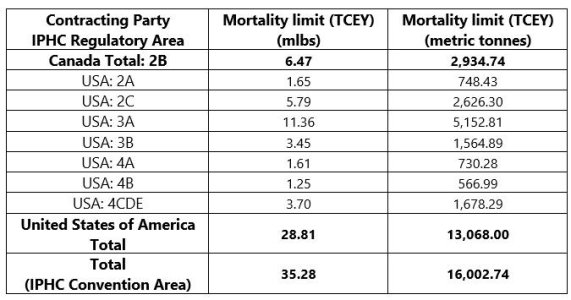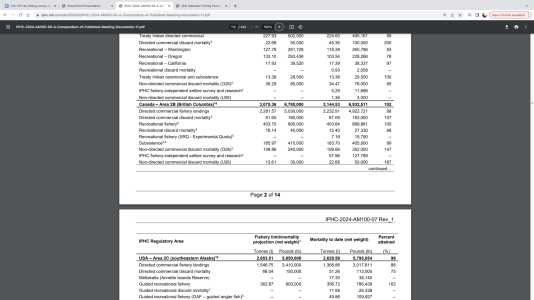searun
Well-Known Member
My earlier reply did actually set out how the Halibut Working Group and DFO receives catch data explaining there are delays (usually a month after the fact) in getting those creel estimates that make things challenging - but I'll break it down in basic steps that give you more detail to try to help paint the picture why these data delays exist.Whose question? If you mean mine, I don’t see anywhere where the process of data gathering was discussed regarding when/ how often?
The process of gathering data and producing estimates of catch is a LOT of work effort and takes considerable time. There is no real-time data available to make decisions which creates challenges to respond in-season and make meaningful fishery changes without some risk things on the fishing grounds can change quickly making decisions based on older data redundant. So when the Halibut WG is trying to make a decision in August to adjust the regulations to address a low catch trend observed in the early data, ...the most up to date data they have is actually largely February to May data with some preliminary June data in the mix. And, most of the halibut TAC is caught in June to August.
All that is needed to really screw up a catch trend is for a couple of simple things to happen like abnormally good weather and salmon fishing. That situation leads to big swings in angler halibut effort because salmon fishing was so good they got all their fish early and now have time to go after halibut in ideal weather conditions which, in turn, drives a catch trend dramatically upward beyond earlier trends that you just made decisions about.
These are basic steps - not a complete description of everything that is done to produce catch estimates.
Basic Creel Estimate process
1) DFO collects Catch per unit effort (CPUE) via dockside creel surveyors - pretty sure everyone here has encountered them and is helpful answering their survey questions accurately
2) DFO conducts over-flights to count the vessels during the main periods of the summery fishery - usually weekly in peak season, but weather dependant
3) DFO runs the IRec internet survey, collecting catch data - 100% of all license holders are surveyed
4) DFO collects lodge and guidebook data (not all lodge/guide log books are available in-season so there is always post season work to gather log books and then make adjustments to the preliminary data....which is one reason why even in January, we don't have the final adjusted estimates)
5) DFO then creates estimates by taking the CPUE from Creel, applies those to average catches to the vessel counts created by the over-flight data to produce a preliminary estimate
6) Lodge and Creel data represent actual catch data (not an estimate) - those numbers are then deducted from the overflight/creel estimates to remove any bias created by applying the average CPUE to guide and lodge boats where we know the exact catch of vessels that were observed and counted by the flight on the days and places where creel flights took place
7) IRec estimates are used to in-fill locations and times where there is no creel/overflight or lodge & guide log data available - there are corrections made to IRec estimates based on applying a calibration to correct estimate bias
8) All these data sources are then pulled together to complete a final monthly creel estimate.
Note - because there are delays in gathering, verifying, collating and checking these data sources that creates about a 1 month delay between the time data collection take place and when they become available as catch estimates for the Halibut Working Group and DFO to consider when deciding how to make adjustments to the fishery regulations using the few tools we have to adjust halibut catch up or down to try to create a full season, while optimizing use of our TAC.



